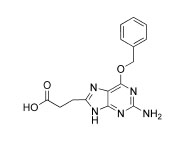上海金畔生物科技有限公司代理New England Biolabs(NEB)酶试剂全线产品,欢迎访问官网了解更多产品信息和订购。
产品信息
There are two steps to using this system: sub-cloning and expression of the protein of interest as a SNAP-tag fusion, and labeling of the fusion with the SNAP-tag substrate of choice. Expression of SNAP-tag fusion proteins is described in the instructions supplied with SNAP-tag plasmids. The labeling of SNAP-tag fusion proteins with SNAP-Surface substrates is described in the instructions supplied with SNAP-Surface substrates. The use of SNAP-Surface Block during the labeling of fusion proteins with SNAP-Surface substrates is described below.

- 产品类别:
- Blocking Agents Products,
- SNAP-tag Substrates Products ,
- Protein Labeling Products
- 应用:
- Snap Surface Products,
- Pulse Chase,
- In vivo Imaging,
- Receptor Internalization,
- Protein Localization,
Protein Labeling Snap Clip
-
产品组分信息
本产品提供以下试剂或组分:
NEB # 名称 组分货号 储存温度 数量 浓度 -
S9143S -20 SNAP-Surface® Block S9143SVIAL -20 1 x 200 nmol Not Applicable
-
-
特性和用法
需要但不提供的材料
- Cells expressing SNAP-tag fusion proteins
- Tissue culture materials and media
- Transfection reagents
- Fluorescence microscope with suitable filter set
- DMSO
-
注意事项
- Storage: SNAP-Surface Block should be stored at -20°C (long term) or at 4°C (short term). With proper storage at -20°C, SNAP-Surface Block is stable for at least three years dry or 3 months when dissolved in DMSO.
- For troubleshooting please refer to the instructions supplied with SNAP-Surface products as appropriate.
- Please note that there is a constant turnover of proteins in the cell. Protein transport to the membrane and internalization followed by degradation or recycling, are constantly ongoing processes. After having blocked SNAP-tag on the cell membrane, newly synthesized protein may be transported to the cell surface and may get labeled during incubation with a fluorescent SNAP-tag substrate. This will give the impression that the blocking was ineffective. In order to minimize these effects of protein synthesis and protein transport, cells may have to be treated with cycloheximide and incubation with the fluorescent SNAP-tag substrate may have to be performed at 4°C.
操作说明、说明书 & 用法
-
操作说明
- Use with SNAP-Surface substrates (S9143)
- Labeling of Proteins in vitro (S9143)
-
应用实例
- Labeling and Imaging of Cell Surface Receptors Mediated by SNAPtag S9143
工具 & 资源
-
选择指南
- Comparison of SNAP-tag®/CLIP-tag™ Technologies to GFP
FAQs & 问题解决指南
-
FAQs
- Cellular Imaging and Analysis FAQs
-
问题解决指南
- Labeling with SNAP-tag® Technology Troubleshooting Guide
-
实验技巧
After addition of DMSO, pipette up and down at least 10-20 times and vortex vigorously for at least one full minute to ensure full dissolution of the substrate.
After diluting the substrate in complete medium, thoroughly pipette up and down at least 10 times to help reduce background.
Increasing substrate concentration and/or reaction time usually results in higher background and does not necessarily increase the signal-to-background ratio (SNR).
